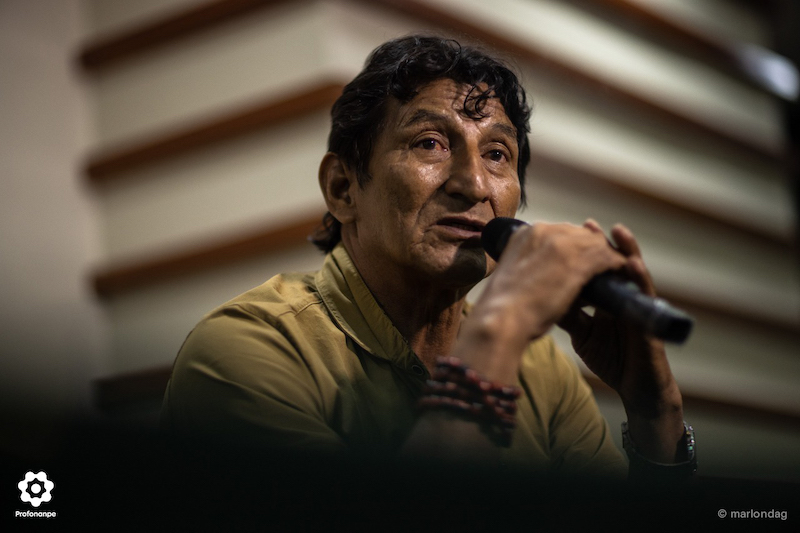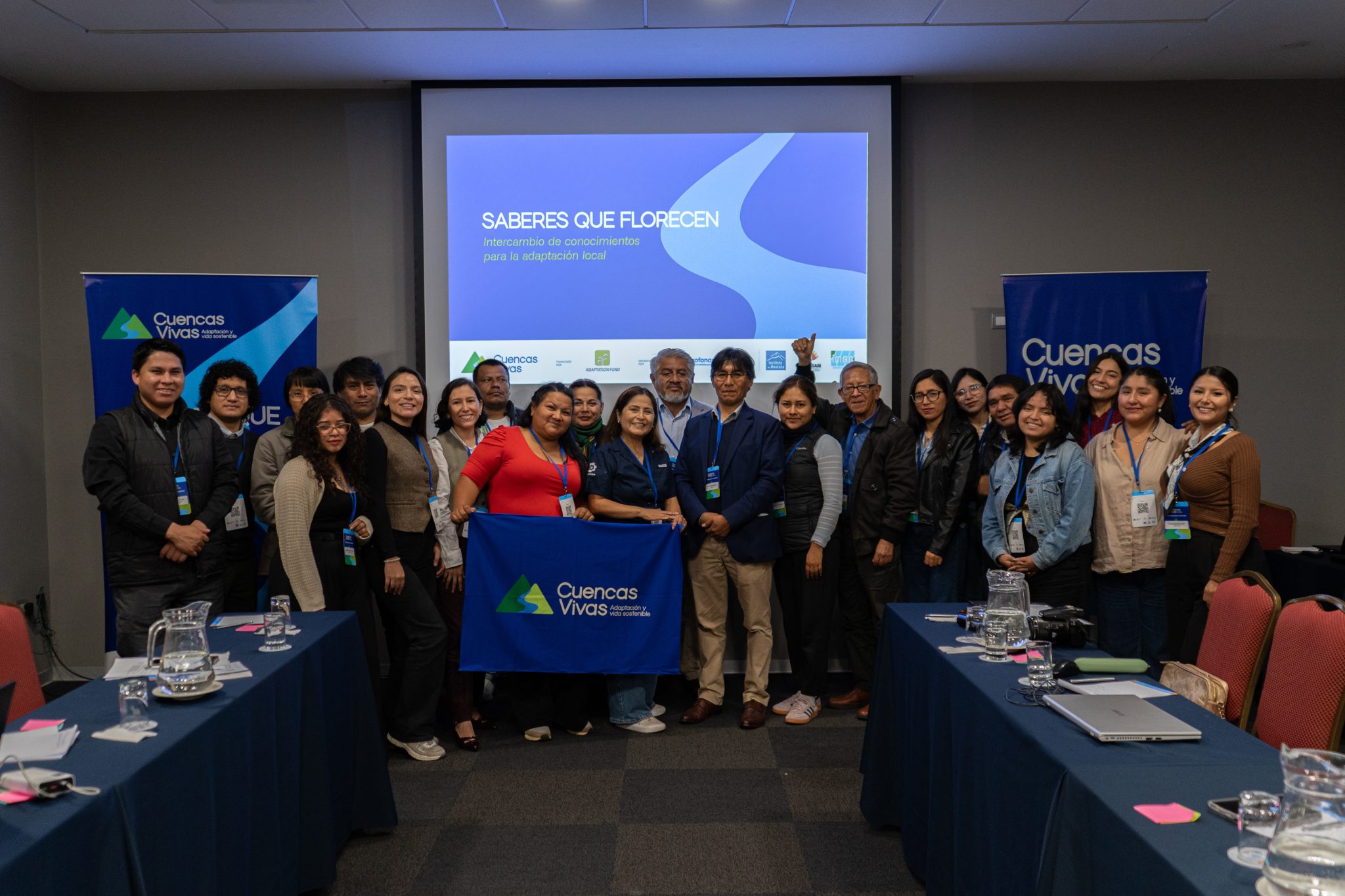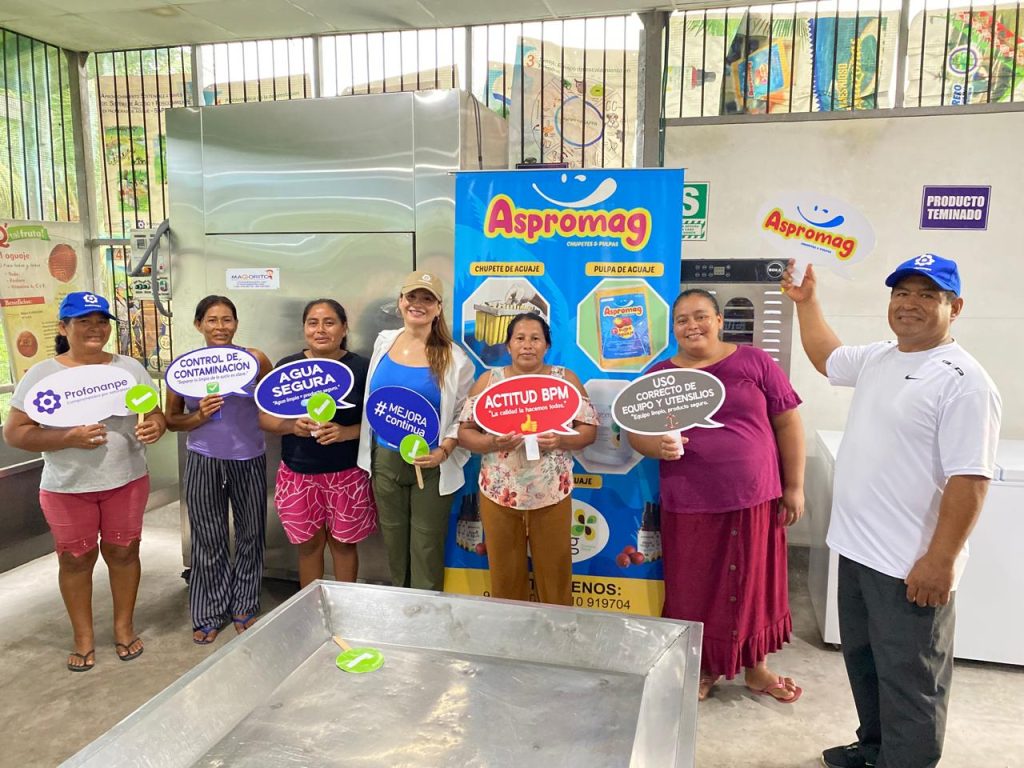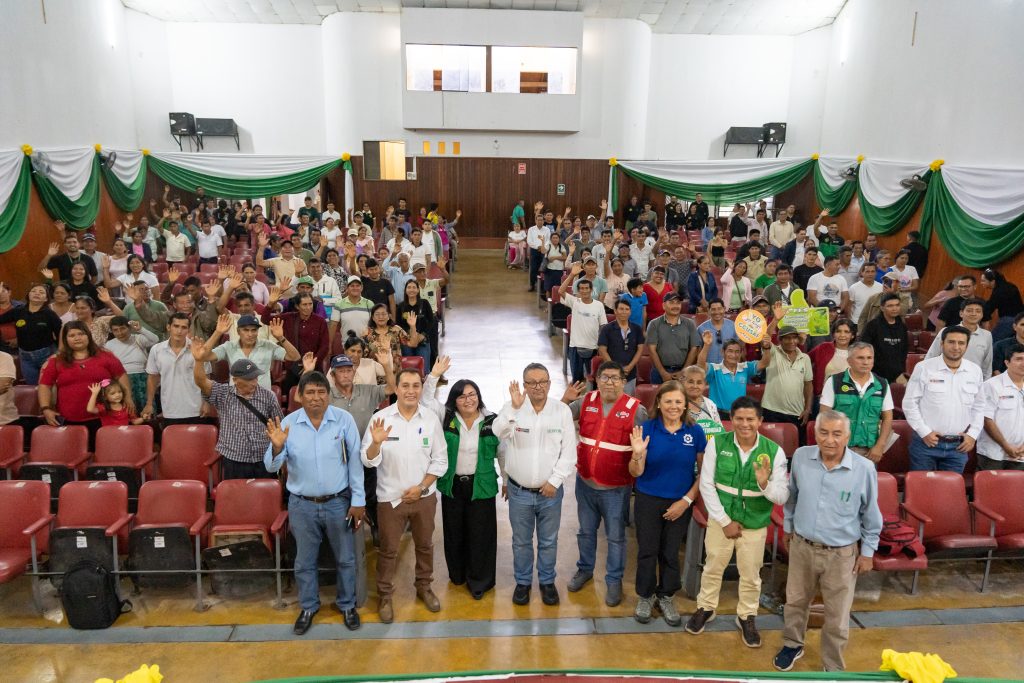Apu Alfonso López, President of ACODECOSPAT
July 2021. – During the international event Peru Remedia, the Ministry of Energy and Mines (MINEM) revealed that to date Peru has 3231 environmental liabilities generated by hydrocarbons, 152 of which are high risk. According to MINEM, the lack of regulation between 1863, when the first oil exploitation took place in the country, and 1993 is one of the main causes of this problem that is affecting communities in Loreto, Piura, Tumbes and Puno.
The event, organized by Profonanpe, Peru’s environmental fund, served as a space to strengthen contact with the native communities of the Peruvian Amazon affected by these environmental liabilities, as well as to reflect on and learn about international experiences in the remediation of areas impacted by hydrocarbons. This is part of the rehabilitation process being implemented by Profonanpe, within the framework of the Contingency Fund for Environmental Remediation.
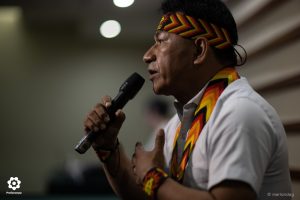
Apu Aurelio Chino, President of FEDIQUEP
In their speeches, the representatives of the native communities of the Pastaza, Corrientes, Tigre and Marañón basins in the Loreto region took the opportunity to mention the serious health problems that the citizens of these areas have been experiencing due to environmental liabilities. “Years of oil exploitation and no government of our country, no minister, no institutions have been concerned about defending our rights as any human being,” said Apu Aurelio Chino, president of the Quechua Indigenous Federation of Pastaza (FEDIQUEP). In this regard, Apu Alfonso López, president of the Cocama Conservation and Development Association San Pablo de Tipishca (ACODECOSPAT), called for an “intercultural interpretation” of the term remediation to “meet the expectations of the indigenous peoples” and urged the authorities to implement clear rules to allow Profonanpe to move forward.
Likewise, Apu Omar Saquiray, president of the Federation of Native Communities of the Corrientes River Basin (FECONACOR), told how in the past the indigenous peoples of the area “lived healthy and had no problems or discomfort”; however, today, due to the exploitation of hydrocarbons “those of us who live in this area have lead in our blood.” Consequently, Apu Maguen Majipo, vice-president of the Federation of Native Communities of Alto Tigre (FECONAT), insisted that the process move forward faster. “The expectation is that we will see good remediation in the future and that the companies will provide us with the technology to carry it out,” he added.
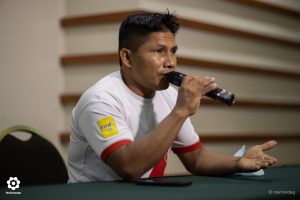
Robinson Sandi, Representative of OPIKAFPE
Anton Willems, CEO of Profonanpe, highlighted the importance of this event that allowed attendees to continue listening to the communities. “How important it is to learn from the communities who, day by day in the field, know better than anyone else the impact of hydrocarbons. Their impetus is very important so that conservation work does not stop,” he mentioned. “From Profonananpe we know that we have a pending task, but it is also important to recognize that great progress has been made at the level of concern of the State and various sectors. This concern for effective remediation of impacted sites is the way forward,” Willems added.
The Vice-Minister of Environmental Management of MINAM, Mariano Castro, emphasized that as long as the remediation processes are successful, the citizens of the affected areas will have the possibility of developing in a balanced environment; however, he indicated that to achieve this it is important to have political will, allocate resources and identify good practices.
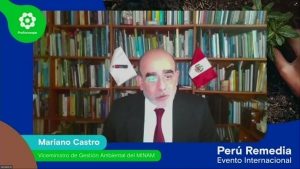
For his part, the head of the Ministry of Energy and Mines (MINEM), Jaime Gálvez, valued the alliance of his portfolio with Profonanpe, Peru’s environmental fund, to work together for the remediation of sites impacted by hydrocarbons. “All countries in the world are in a process of energy transition; however, it will not be fast because it is not easy to replace hydrocarbons. We have had insufficient environmental controls. The alliance with Profonanpe allows us to have the remediation of sites impacted by hydrocarbons and areas of the jungle that have not had adequate environmental treatment,” pointed outGálvez in his speech.
Likewise, the Venezuelan expert in remediation, Carmen Infante, shared part of the South American country’s successful experience and emphasized to the event’s attendees the importance of continuing to work in favor of the ecosystem. “It is important to restore the health of the damaged forest soil and thus recover the ecosystem, which leads to rebuilding its ecosystemic spaces,” he noted.
Among other points addressed in Peru Remedia, the invited international experts agreed that remediation requires constant studies, pilots and compliance with standards, and that technology can be a great ally, depending on the ecosystem, as long as there is persistent learning, adaptation and, above all, the consent of the community to implement it.


